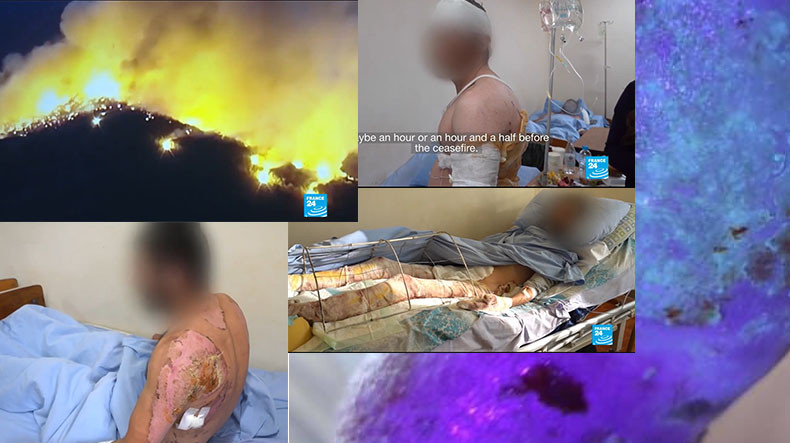
Phosphorus burns in 44-day war: restricted movement, disfigurement
Reports about Azerbaijan's use of prohibited weapons containing chemical elements, particularly white phosphorus, during the 44-day war first emerged in October 2020.
“As data show at this point, Azerbaijan is using phosphorus munitions containing elements of chemical weapons. They are being used to set fire to forests near civilian settlements,” then Armenian Ombudsman Arman Tatoyan said on October 30, 2020.
“These munitions have clear effects of mass destruction for environment; now they are also used against civilians by the Azerbaijani military and in this context are forbidden under international law," he noted.
The civilian population was hiding from Azerbaijani shelling day and night in the forests.
A year and a half has passed since the war, the records of white phosphorus burns in the war are still just guesswork, while soldiers who sustained burns still have to seek medical care.
Speaking to Panorama.am on Wednesday, Deputy director of the National Burn Center Karine Babayan said that they treated 130 patients with burns, but only 30-40 were examined. Doctors can only assume that the burns were caused by white phosphorus.
"The center treated 130 patients, but it wasn't until a month after the war began that we realized it could be phosphorus burns. In the case of 30-40 people, we carried out examinations, took tissue samples. The type of the wounds, the outcome of laboratory tests, the difficult healing process of the wounds, Wood lamp examinations, other studies and data show that it looks like burns from phosphorus weapons, but we cannot say for sure. In order to make a final diagnosis, we needed to conduct a histological study, which is not carried out here. It is an expensive and complicated study," Babayan said.
According to the doctor, the recovery of patients with such burns is slower because, in addition to the burns, the skin is exposed to a chemical substance.
"How did we know it wasn't an ordinary burn? The signs were different and the disease was getting worse. Usually when we perform a plastic surgery, the outcome is perfect, but this time it was not successful in 50-60% of cases. We addressed this question to specialists from other countries, and they said that such failures are possible, because there are chemical substances, which does not allow the result to be perfect,” she said.
“In medicine, the earlier the surgery, the better. In this case we tried to operate as soon as possible, but it didn't work because there was a problem. The slower the wound heals, the more scars appear. The thicker the scars, the more restricted the movement is and the more distorted the appearance is," explained the doctor.
She says that the servicemen who have already recovered from the burns and have scars restricting their movement and distorting their appearance are now undergoing reconstructive surgery at the center, which employs a doctor who has been retrained in other countries and performs such operations.
"These people are having a hard time. In addition to the fact that they withstood that catastrophe, they are left with hard, disfiguring scars," Babayan noted.
It is still unclear whether people with white phosphorus burns can experience other health problems during their lifetime.
"No other country has had as many patients with burns allegedly from white phosphorus. We think this substance can cause cancer and infertility in young men. We've talked to professors from different countries, they say, ‘in fact it’s you who treat the first such patients, in the future we may refer to you if necessary’," the specialist said, adding the treatment is provided according to the symptoms.
She noted that burns from fire can be deep, while in the case of phosphorus, they reach almost to the bone. Phosphorus generates 800-1200 degrees celsius, thus a drop on human skin causes a very deep burn.
The burns were mostly on the patients’ faces, hands and lower limbs. According to Babayan, 80% of the patients had various injuries, including fractures, bruises, hearing and vision problems.
Babayan said there were death ceases, when the burns were deep and incompatible with life.
The photos below were released by the Armenian Ombudsman’s Office on December 6, 2020.
(1).jpg)
(1).jpg)
(1).jpg)
(1).jpg)
(1).jpg)
(1).jpg)
Newsfeed
Videos






























